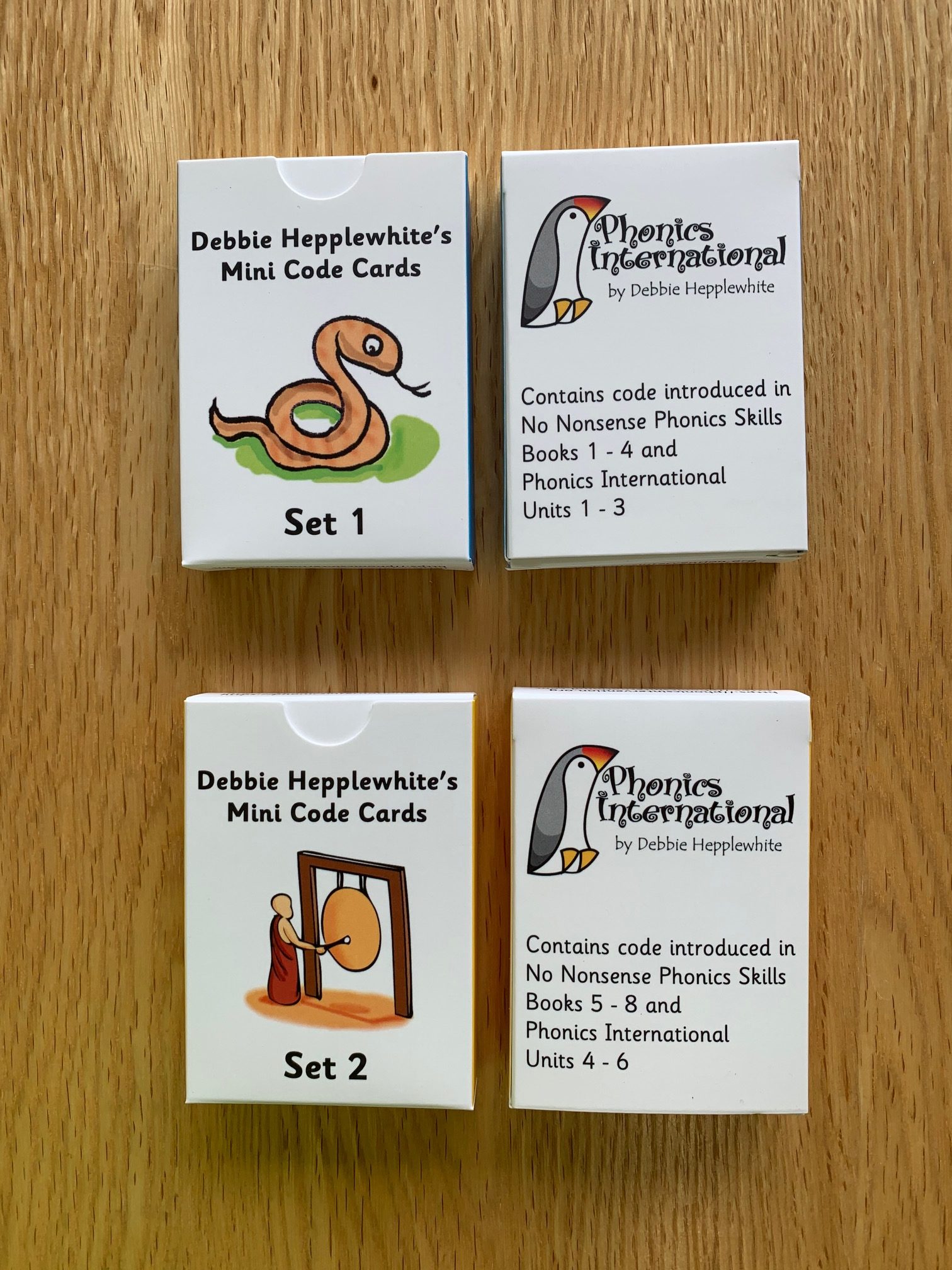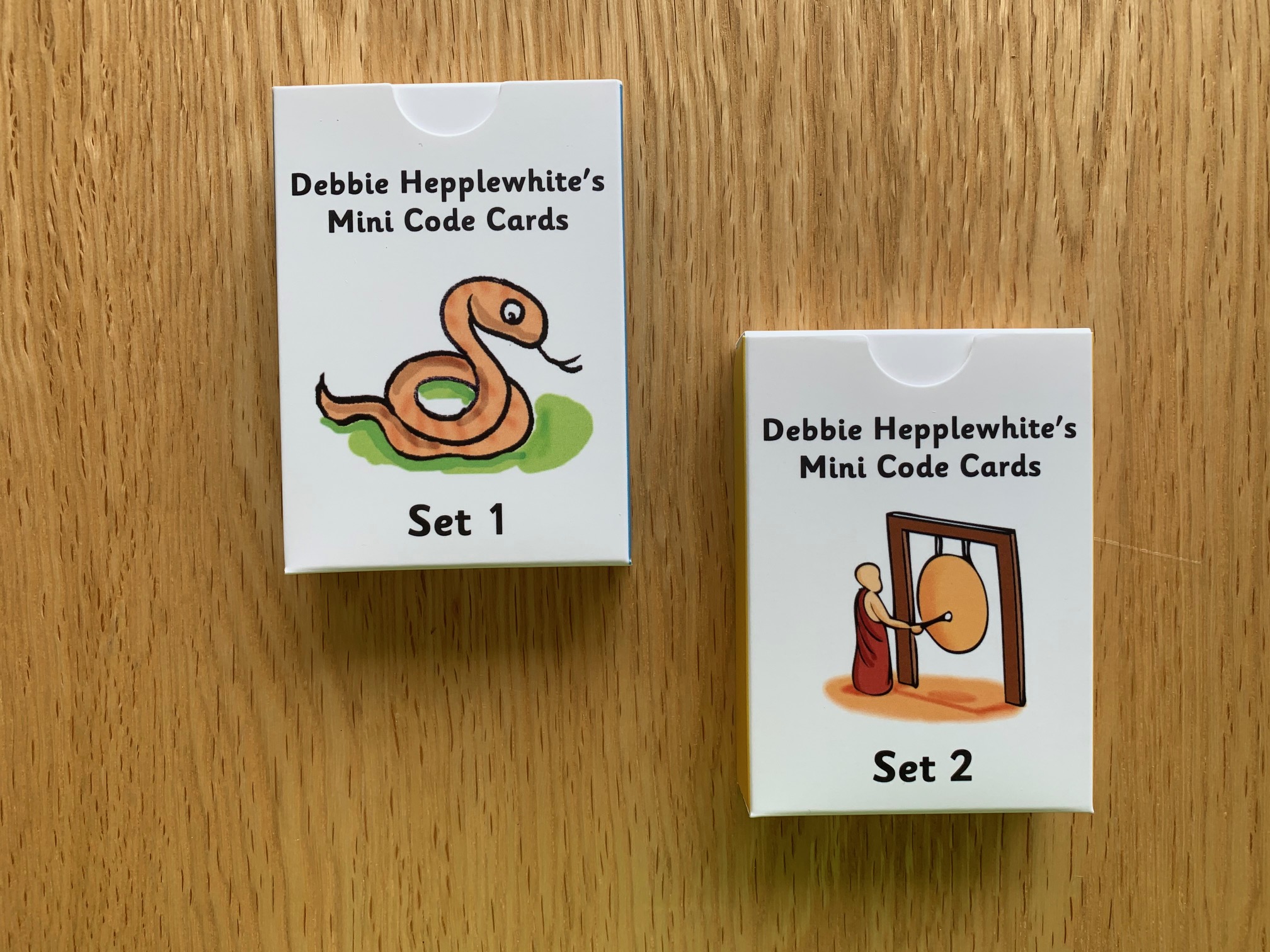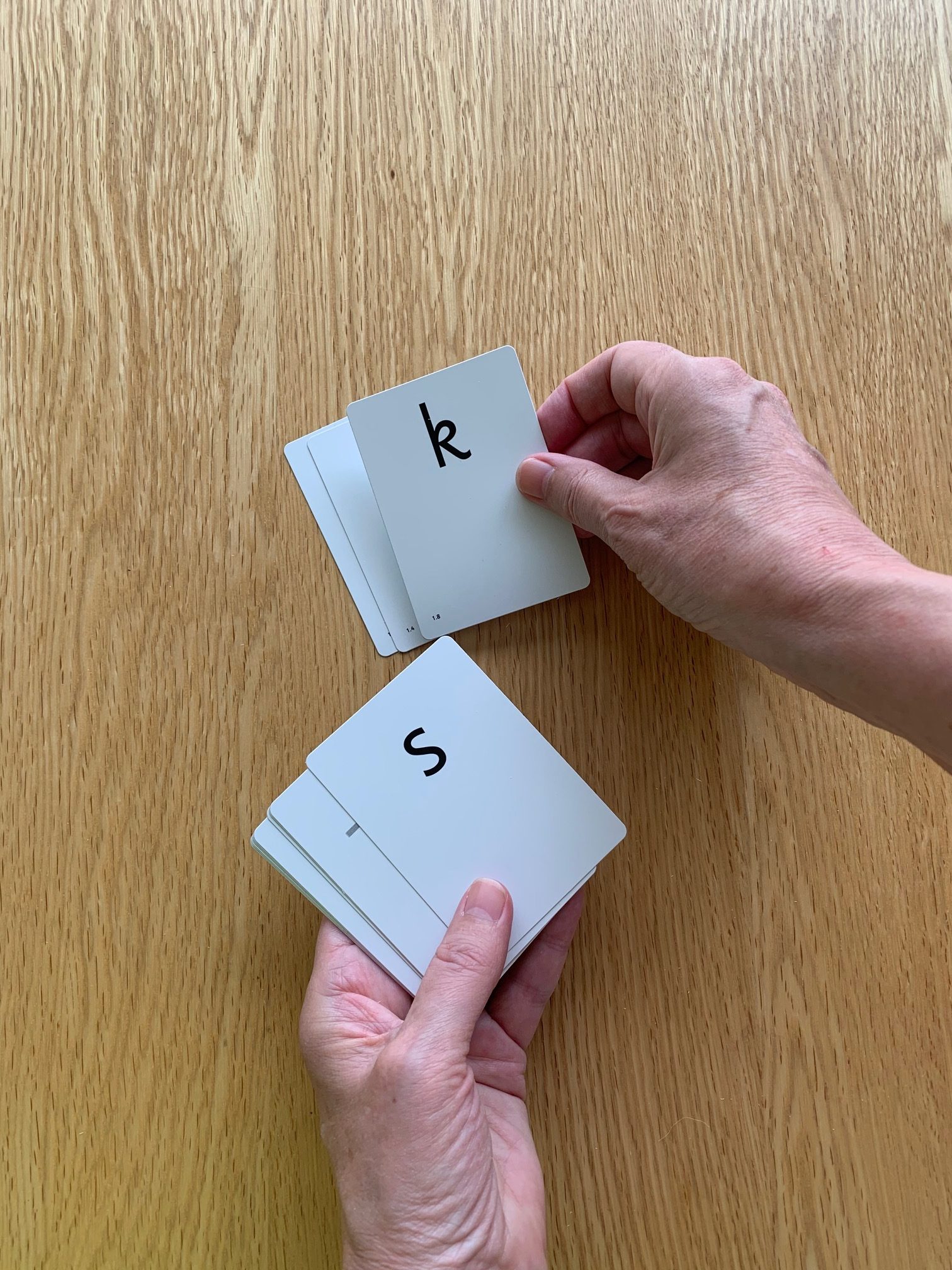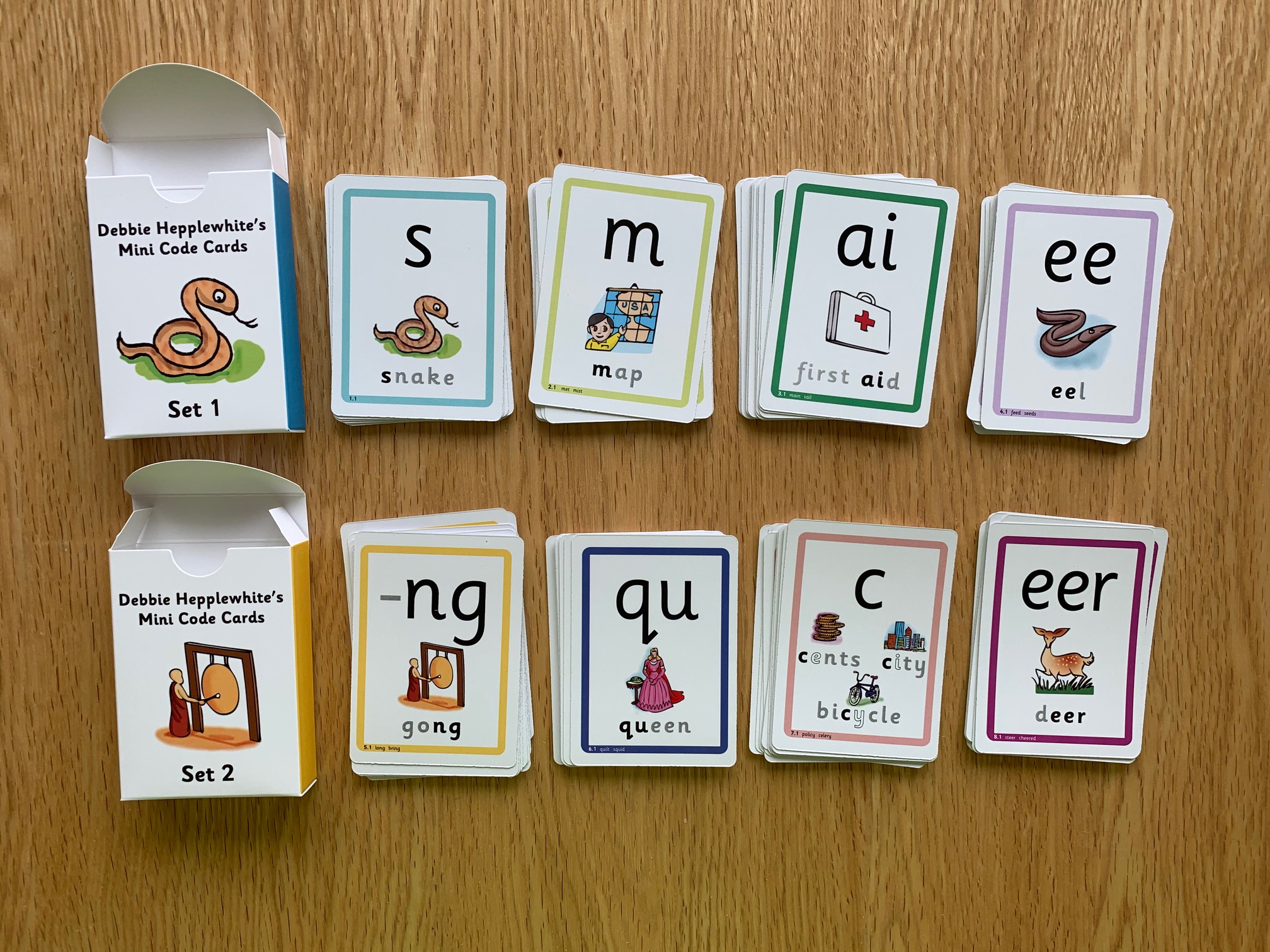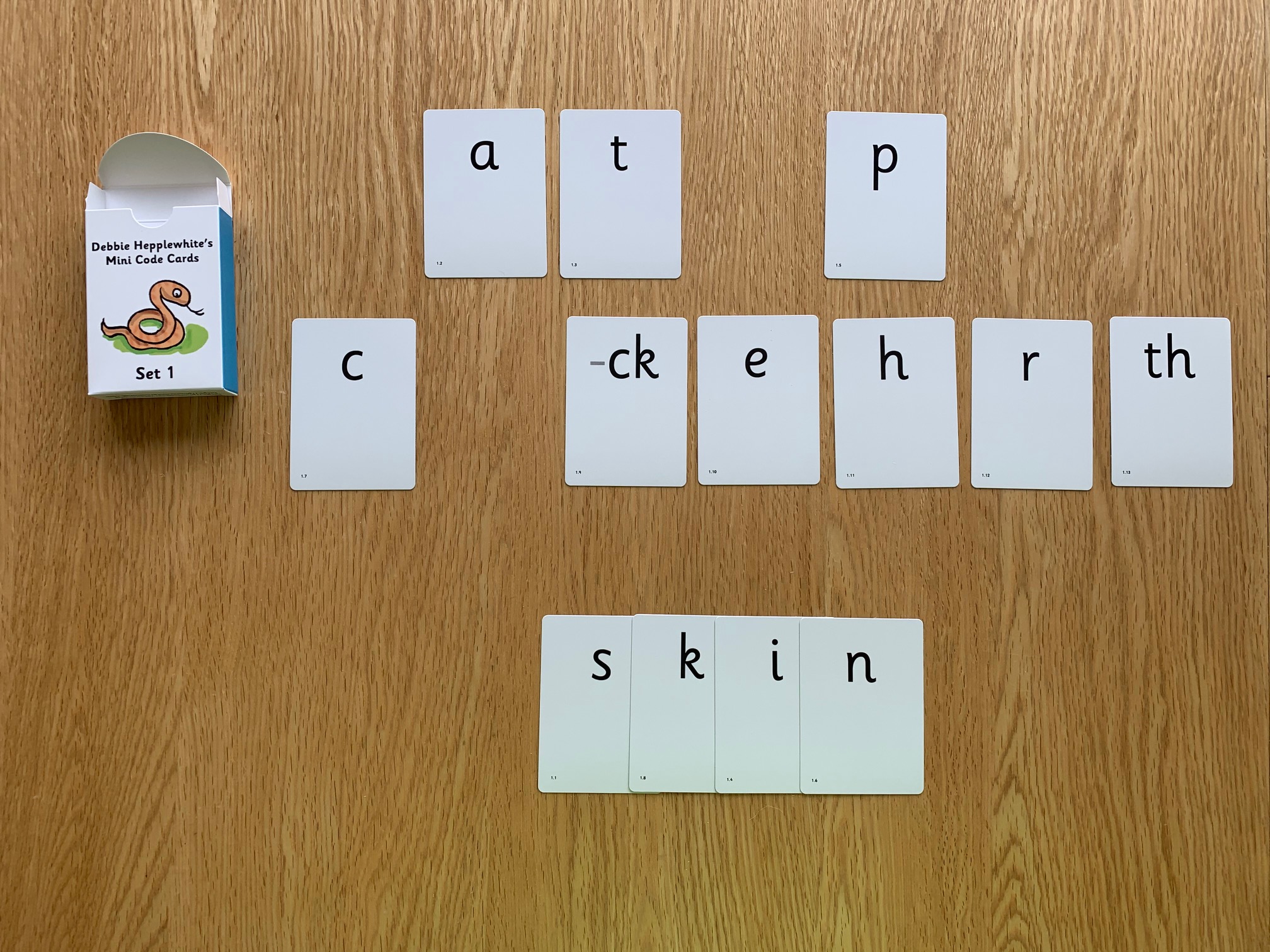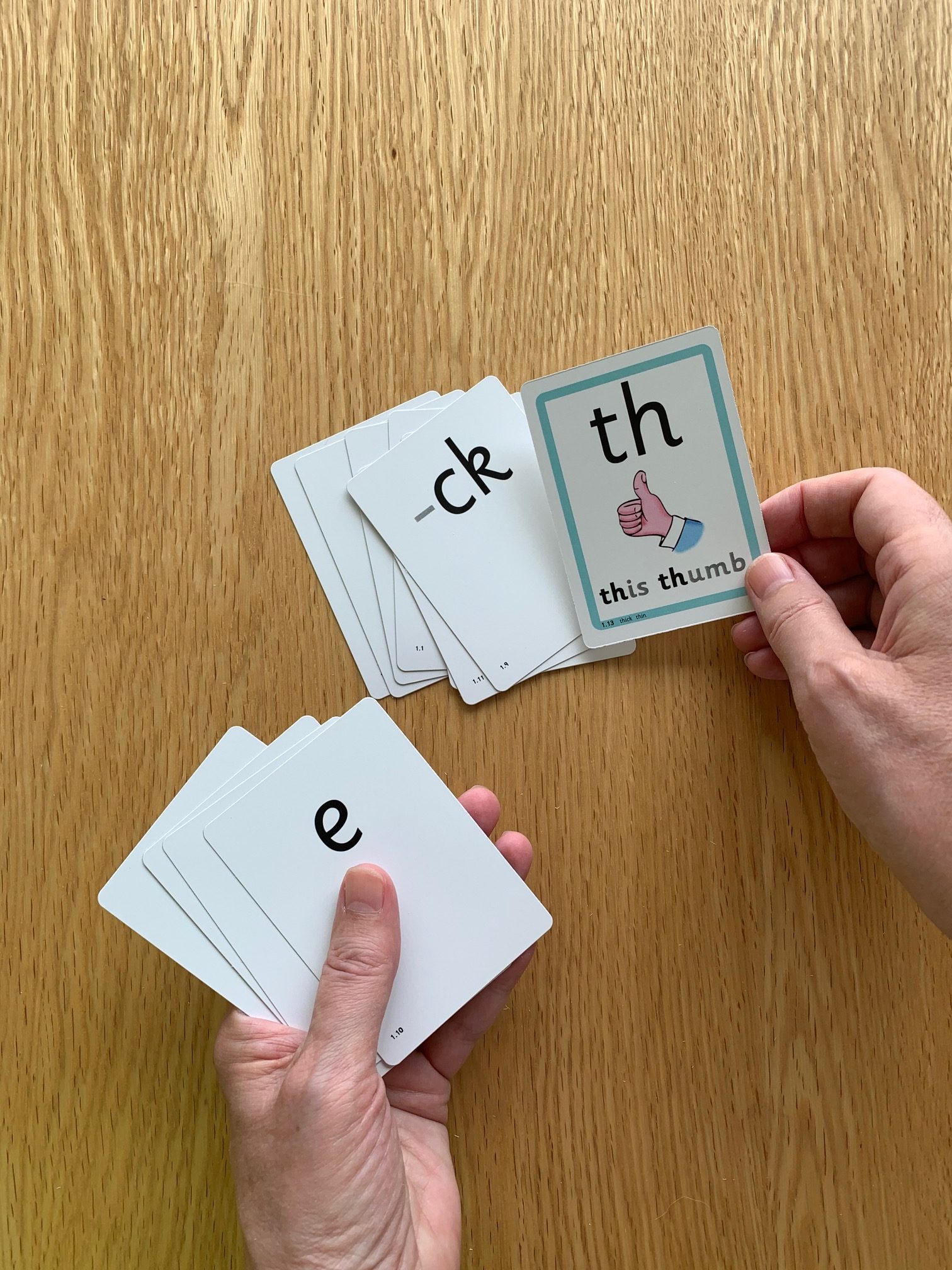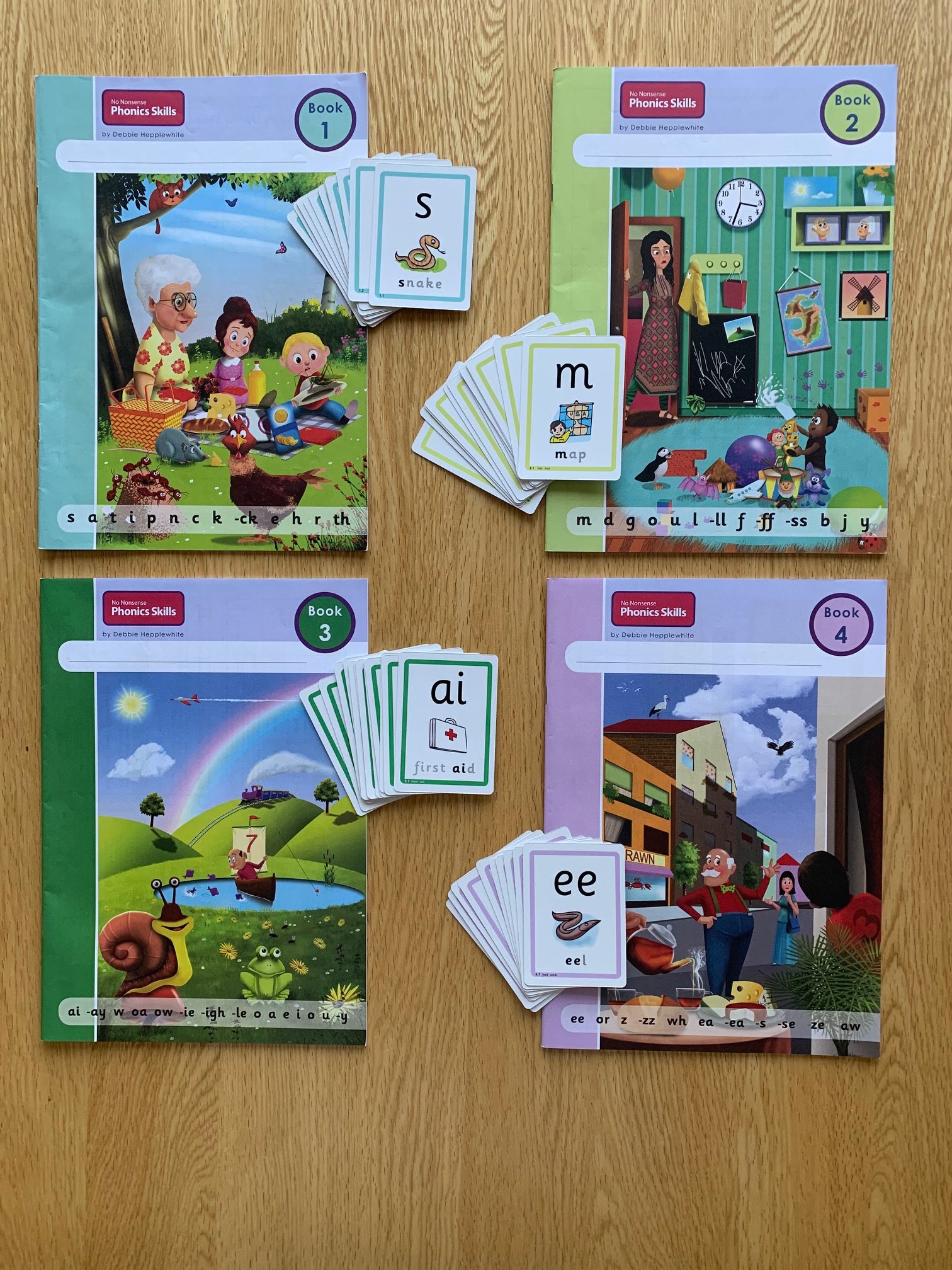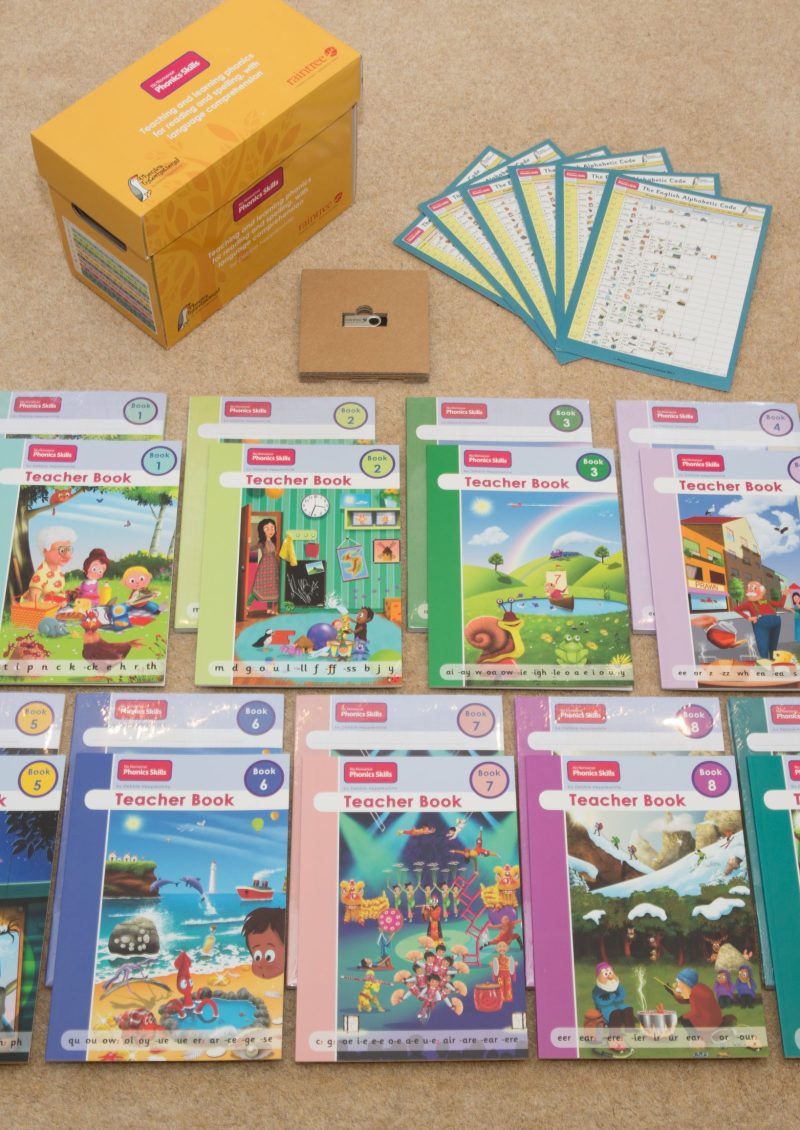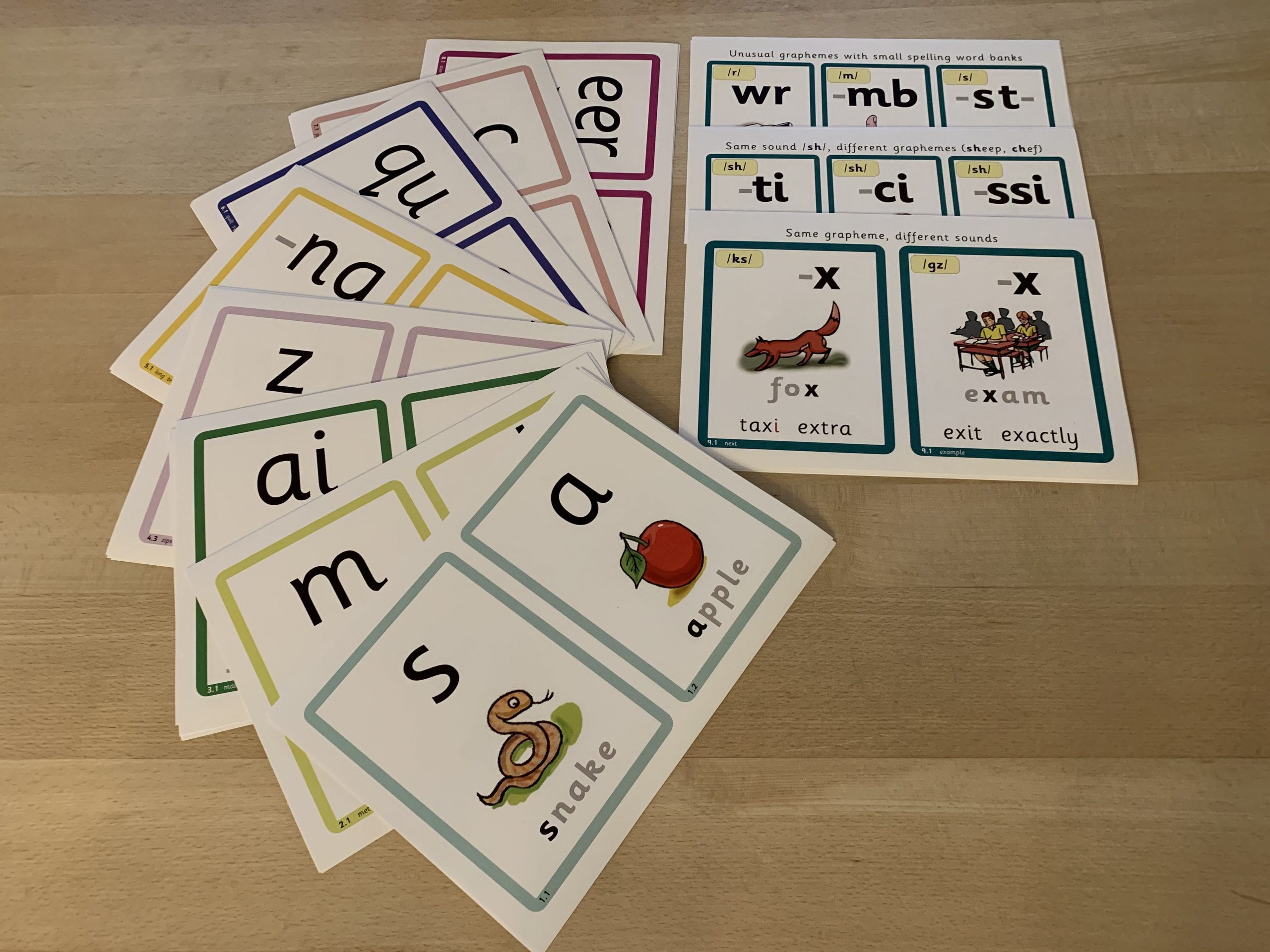
A4 Frieze Sheets – 2 Sets (2 x 96 sheets)
8th April 2021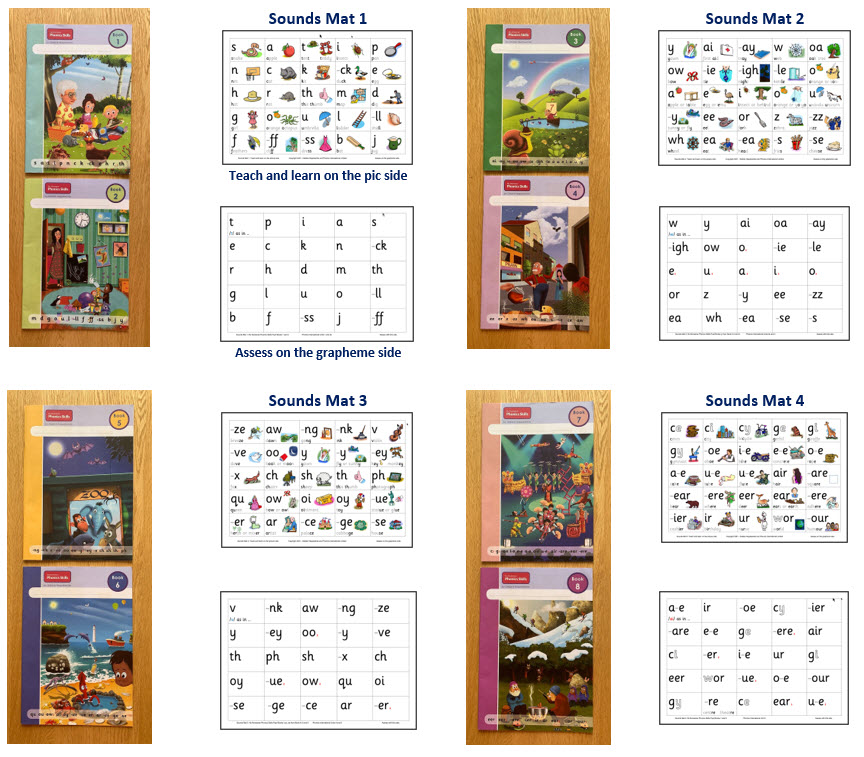
Sound Mats – Set of 4
31st May 2021Mini Code Cards (Set 1 and Set 2 – sold together)
£18.00 plus VAT (if applicable)
Size and card type:
The mini code cards are plastic coated, 320gsm linen finish, playing card size and quality.
Organising and sequencing:
The 99 mini code cards, provided in two packs, ‘chunk’ the letter/s-sound correspondences of the alphabetic code into 8 sub-sets with different coloured borders. Each card has sequential numbering on back and front to ease systematic management.
ABOUT THE MINI CODE CARDS
Size and card type:
The mini code cards are plastic coated, 320gsm linen finish, playing card size and quality.
Organising and sequencing:
The 99 mini code cards, provided in two packs, ‘chunk’ the letter/s-sound correspondences of the alphabetic code into 8 sub-sets with different coloured borders. Each card has sequential numbering on back and front to ease systematic management.
For Full Information and Printable Guidance Click HERE
The No Nonsense Phonics Skills series:
The colour-coding of the 99 mini code cards is a match for the NNPS Books 1 to 8.
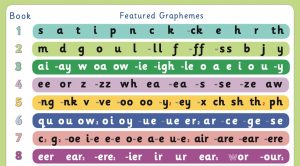
Purpose:
The 99 mini code cards are ideal for use in school and at home. They provide easy-to-handle cards for ‘quick fire’ activities to support learning and revision of a comprehensive range of letter/s-sound correspondences of the alphabetic code. The mini code cards can also be used for word-level reading and spelling activities and for assessment.
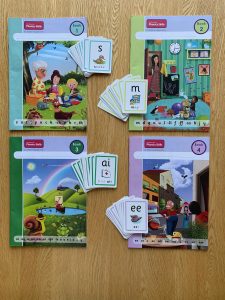
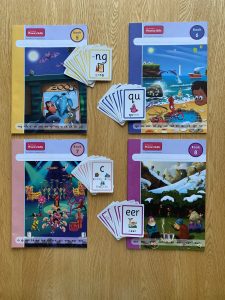
Set 1: No Nonsense Phonics Skills Books 1 to 4 Phonics International Units 1 to 3
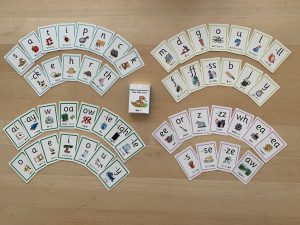
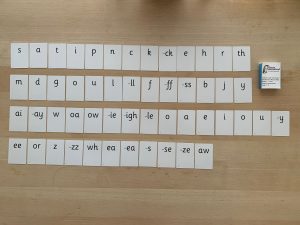
Set 2: No Nonsense Phonics Skills Books 5 to 8 Phonics International Units 4 to 6
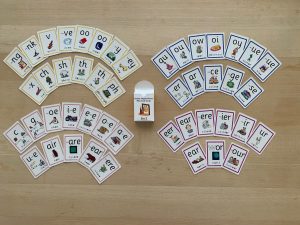
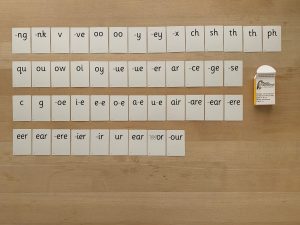
The Phonics International programme:
Phonics International has 12 Units of cumulative printable and projectable resources. The 99 mini code cards include the letter/s-sound correspondences (same order) as introduced in the first half of PI, Units 1 to 6, for when learners are beginners. For information about PI and free CPD resources, see https://phonicsinternational.com
Learn the code:
To see the letters and letter groups and ‘say the sounds’ in quick response is a phonics sub-skill for reading (decoding for reading is a print-to-sound process).
If the child cannot recall the sound, flick over the card to show the prompt picture and example word or words until no pictures are needed to prompt the sounds.
Note: The ‘grey dash’ in front of some letter/s indicates that the particular letter/s-sound correspondence is not used for spelling the sound ‘at the beginning’ of printed words.
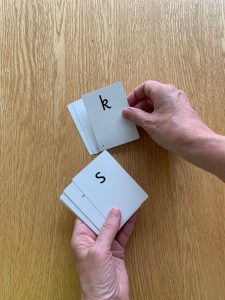
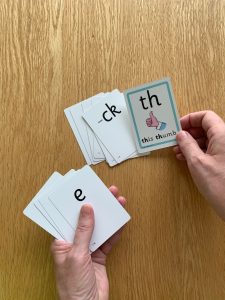
Teaching and learning tip:
You can use the mini code cards in their colour-coded chunks, but keep returning to the chunks that have been previously introduced to embed the code knowledge and to ensure the child knows each letter/s-sound correspondence to automaticity – saying the sounds without hesitation.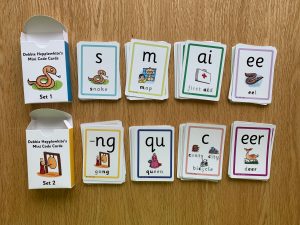
Assessment – informal (ongoing) and summative:
The mini code cards can be used to assess informally the letter/s-sound correspondences known well (ongoing). In school, the cards can be used for periodic ‘recorded’ assessment of code known and not known (summative).
Word level reading:
Use cards with well-known letter/s-sound correspondences to build words for reading purposes – the child sounds out and blends the sounds to ‘discern’ and say the target words.
Learn the code:
For a sub-skill of spelling, the adult ‘says the sound’ and the child selects the card with the correct grapheme (letter or letter group) that is code for that sound. The adult will need to distinguish ‘which’ grapheme is intended, for example: “…the /k/ as in duck” or “…the /k/ as in cat”.
Spelling:
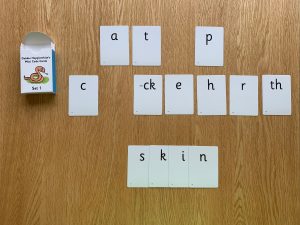 Encoding for spelling is a sound-to-print process. The adult says the spoken word aloud, very slowly and naturally, to model oral segmenting – that is, to split the spoken word up into its sounds from beginning to end and tally on to thumb and fingers of the left hand, palm facing the adult (to ‘count’ the sounds). Then the child selects the cards to spell the word. Sound out and blend the sounds to check the spelling.
Encoding for spelling is a sound-to-print process. The adult says the spoken word aloud, very slowly and naturally, to model oral segmenting – that is, to split the spoken word up into its sounds from beginning to end and tally on to thumb and fingers of the left hand, palm facing the adult (to ‘count’ the sounds). Then the child selects the cards to spell the word. Sound out and blend the sounds to check the spelling.
Mnemonic (aid to memory) key picture words:
The graphemes of the alphabetic code are shown in large font with example key pictures and printed words. These are included on Debbie’s free printable/projectable Giant and Mini tabletop Alphabetic Code Charts at https://alphabeticcodecharts.com
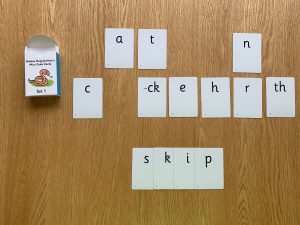 Purchasable ready-made pull-up or hang-down Giant and Mini tabletop charts on this website
Purchasable ready-made pull-up or hang-down Giant and Mini tabletop charts on this website
The No Nonsense Phonics Skills Starter Kit USB stick provides additional resources including a printable Giant Alphabetic Code Chart and a printable Giant Alphabet Poster showing letter formation on writing lines.
Training: For information about Debbie’s training and advisory services, see https://phonicsinternational.com
| Weight | 0.2 kg |
|---|

